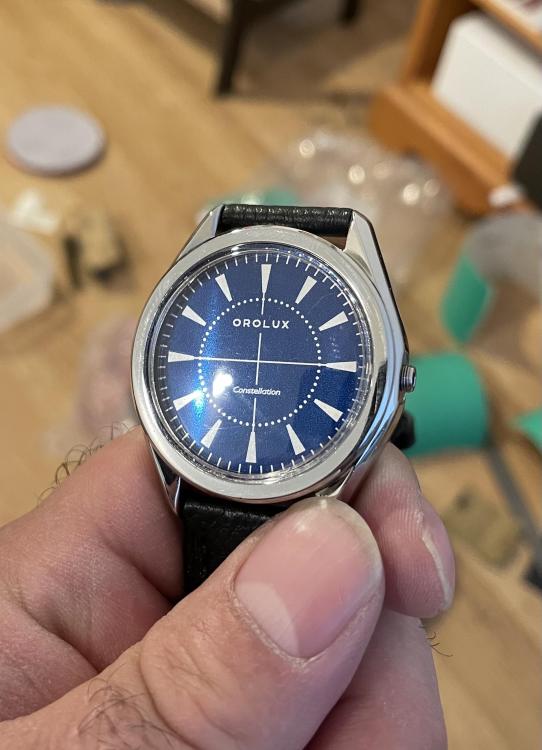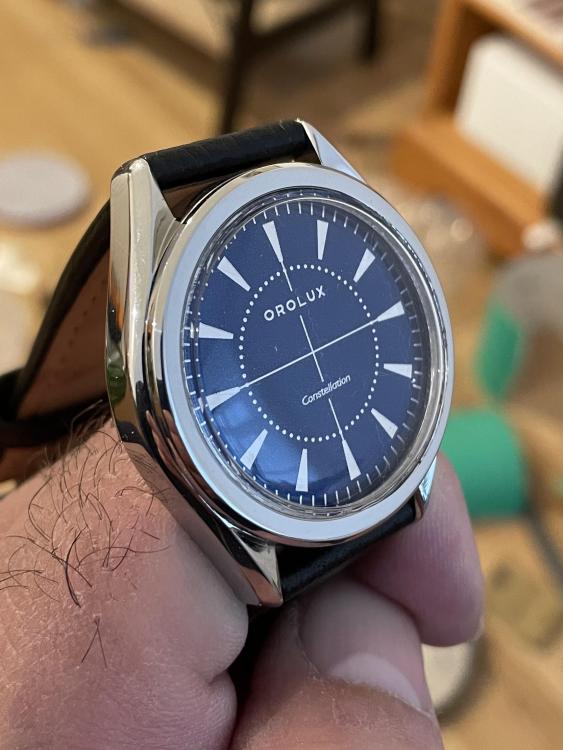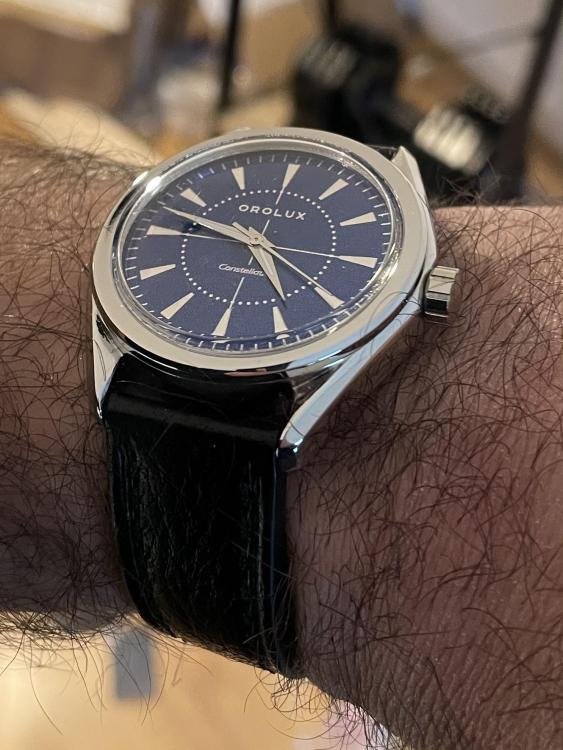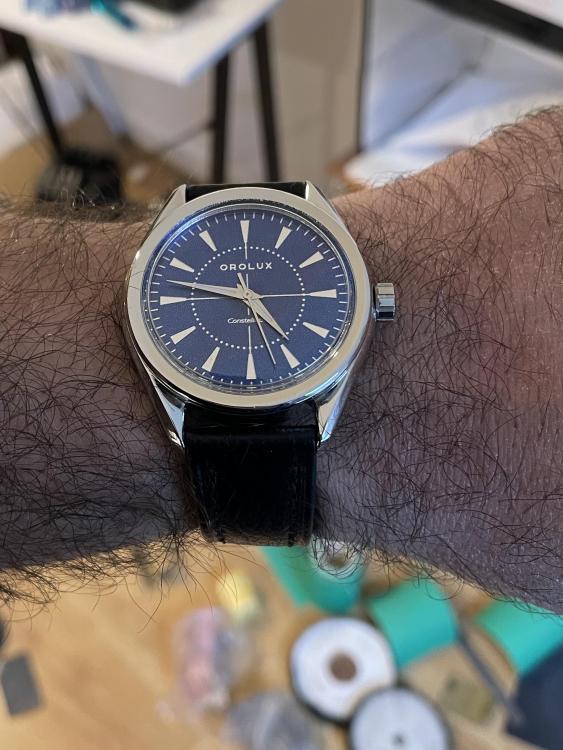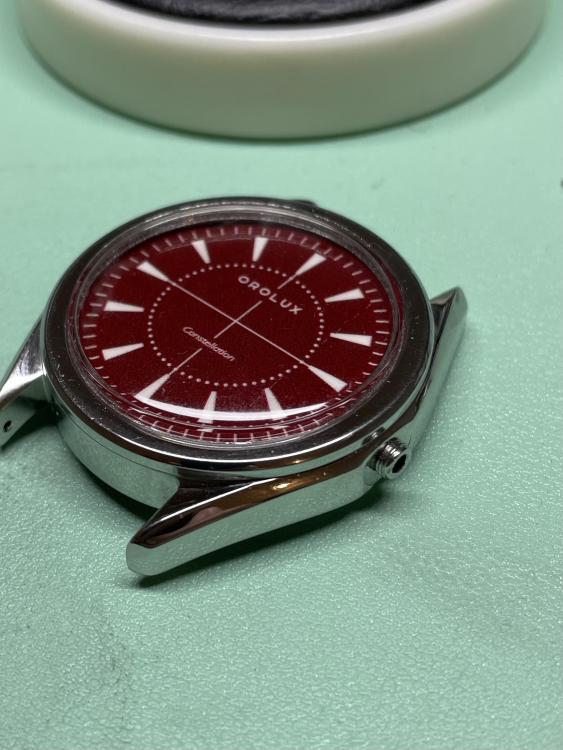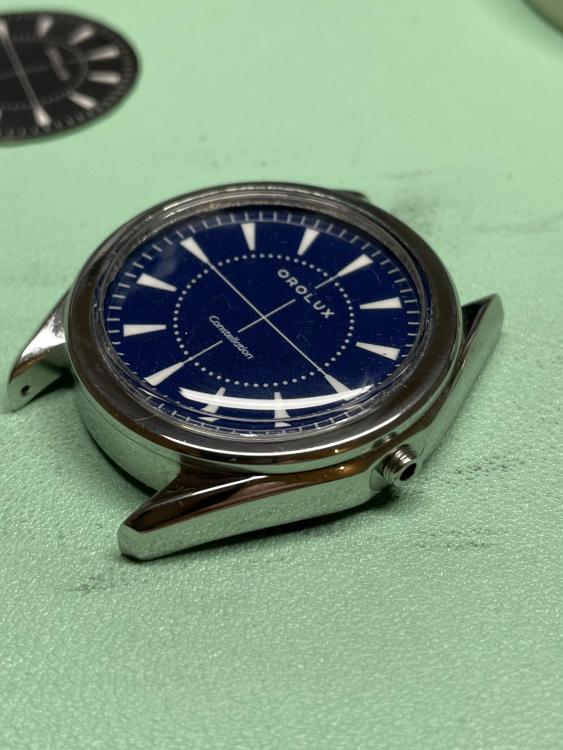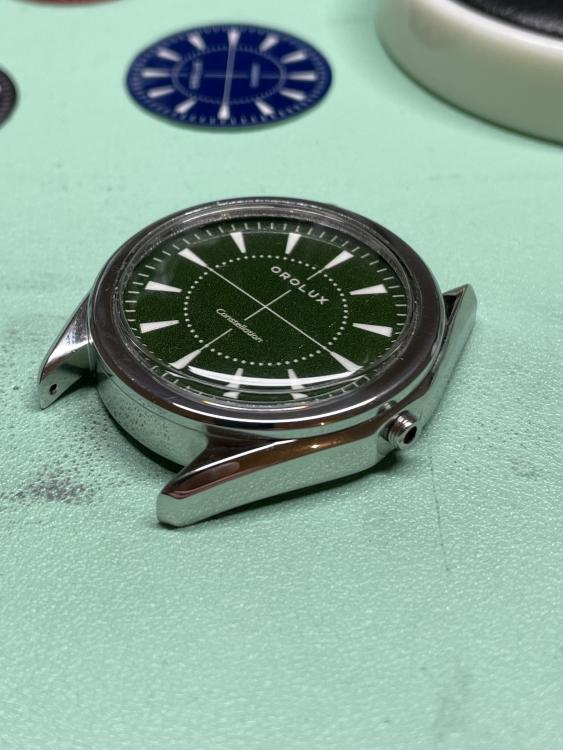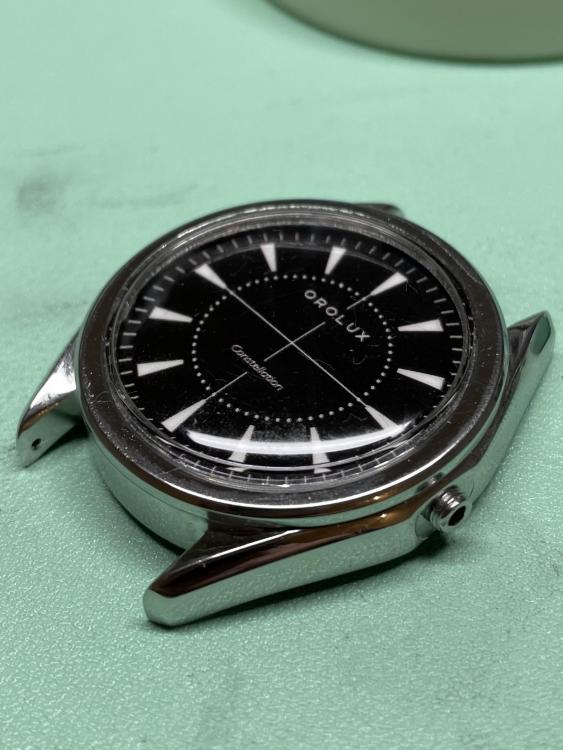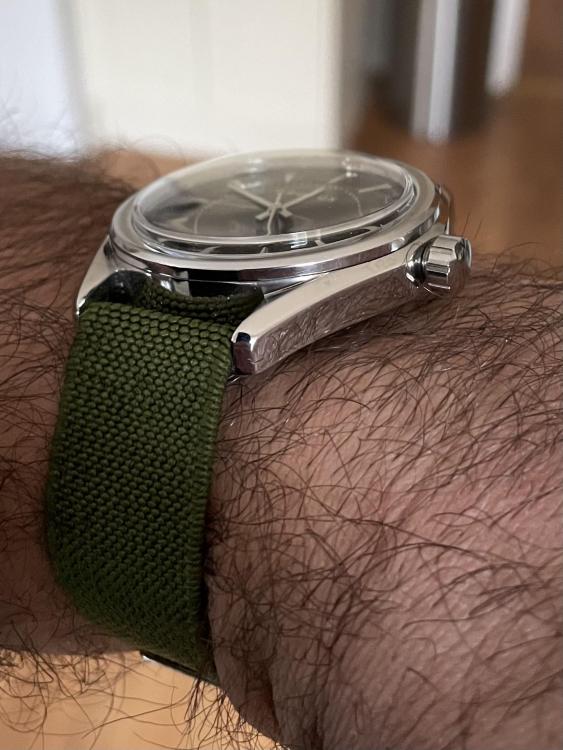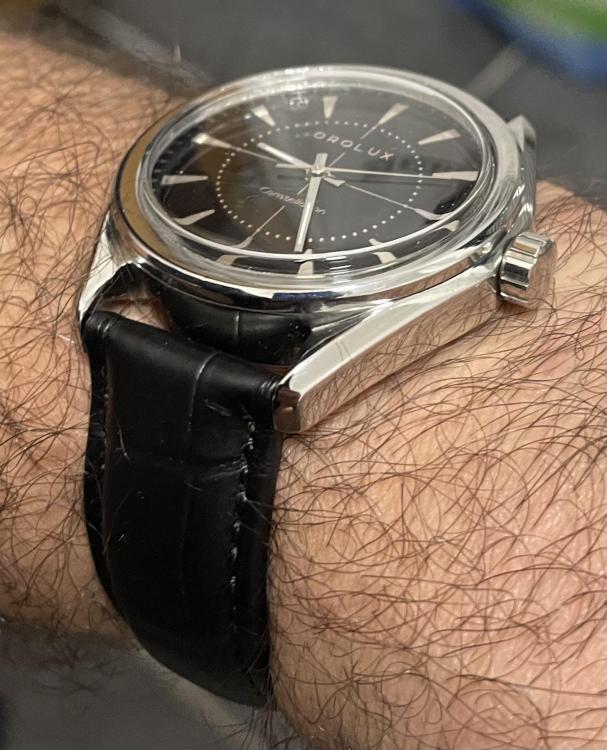Leaderboard
Popular Content
Showing content with the highest reputation on 11/19/21 in Posts
-
Dewey has some views I don't really agree with (like it's not possible to vibrate a new hairspring and achieve original performance), but I agree with him on this one- pretty much. If I make a staff and install it, I might check on the poising tool, but even if there's a clear error I don't touch anything until I've checked it on the machine. You can end up doing a dance where you have to undo work static said was necessary after checking dynamic poise. But static poise isn't worthless. He chose a poor example of the high grade Hamilton; I'm certain that balance would check out just fine on a poising tool. I did a staff for a LeCoultre 104 for a colleague, it had something like 100s delta (which isn't unheard of on these- the official timing spec is within 1 minute on a cyclotest machine, haha), he begged me to poise it, which I did on my Levin poising tool. Ended up under 30s delta, which is unheard of on these. This is a caliber that is about 1mm bigger than the LeCoultre 101, smallest in the world. Odd thing on really small delicate calibers, the dynamic poising procedure actually reverses sometimes. Never figured out why, and other truly expert timers have observed the same, with no idea why. On that 104 I might have chased my tail for 2 days dynamic poising, where static poising gave far better than factory results. So I agree with Dewey, except for when I don't.4 points
-
I picked up this little Chinese Standard movement pocket watch for a penny under four quid, as a non runner to use as spares. Sure enough, it wasn't running when it arrived, but once stripped and cleaned it goes just fine. I also assumed that the sub-dials were fake. It turns out that all of the sub-dials work. Sub seconds, 24hr hand and a day night moon/sun complication. Well arguably that is really just a sub second and two ways of displaying the same complication, but for less than four quid I 'aint complaining. It wasn't running when it arrived, but once stripped, cleaned, and lubricated with a slightly higher quality oil than it originally sported, it goes just fine. The exhibition half hunter case still had the plastic protectors attached to both of the crystals, so there isn't a single scratch on them. Its not particularly high quality as you can imagine, but none the less, a quite attractive little novelty item for the collection.3 points
-
2 points
-
Only if the word new is not a new blued steel mainspring. Far as I know they were never prelubricated it's only the more modern white colored ones supposedly. Depending upon the packaging sometimes they will actually tell you there prelubricated typically they may not. So either there prelubricated with some form of dry invisible lubrication Or whether it's some kind of steel that supposedly doesn't need lubrication. Then as correctly pointed out if it's an automatic watch you do need a special grease for the outer barrel wall2 points
-
Correct, but if it's an automatic you still need to grease the barrel wall.2 points
-
Hi all, Sorry for the click-bait title, but I want to get a discussion going here. A few days ago I found the website below, which is maintained by Dewey Clark, a Wostep-certified watchmaker based in Baltimore. The website is well-written and full of good advice. Perhaps he is even on this website? One portion of the website is devoted to watchmaking "myths." One in particular that he has a problem with is static poising. An extended quote: Almost every watchmaking tome encourages the reader to "poise the balance" with the poising tool. This practice is only useful when doing new work. Countless precision watches have been destroyed by people who took this as fact from writers such as Fried. They either used balance wheel undercutters, filed the underside of the screw heads or turned the heads down in the lathe to do a first class botch job. Totally unnecessary and destructive in repair/restoration work. Think about a Hamilton 992 Railroad watch that never was sold and is still in its original factory sealed container. It is out there somewhere. Yes, the balance was poised when first staffed. But then, it was "adjusted to 6 positional rates". This was done by timing the watch in the positions and then moving or changing the balance rim screws. By definition, the balance left the factory "out of poise"; but adjusted to hold 5 seconds per day across 6 positions! And further: Think about it, all those authors stated the use of the poising tool as an article of faith without ever explaining why in the world anything done in restaffing would change the factory adjustments; other than poor technique. In other words, if you've done your re-staffing right, then you should not have to do anything to the balance to poise it, as the original dynamic poise should not have been disturbed. By assuming that you've disturbed the dynamic poise when you haven't, and then static poising, you are destroying the dynamic poising and effectively vandalizing the watch. Link below. Looking forward to hearing everyone's thoughts. https://www.historictimekeepers.com/Myths.htm1 point
-
In the case of a really pristine high grade watch it is a shame to muck around with the balance unnecessarily. Most watches it's not really a big deal- unless you're paying your bills with this work- then you find the fastest way to the best result. For me that's usually dynamic poise, but if there's a glaring error on the static tool, well, I'll at least take note of the position.1 point
-
Ha Ha I like that, how about "The Weasol Watch Co" No thats going a bit too far. But I like the simplicity and un fussy style it is to me classic. When you look at it it tells you the time, its prime function without complication. like I said Clsaaic. cheers1 point
-
I've mentioned this before here, but more often than not, I find that balances which have been "had at" by people trying to poise are more often than not in worse poise than those which appear untouched. Secondly, I generally find that re-staffing does not spoil poise. However, you do need to remember that the balance roller may not land in precisely the same position afterwords, and you may achieve a different amplitude with newly-polished pivots.1 point
-
Glad you brought this up! The same question occurs to me every time the poising tool is mentioned. Our very own WellAdjusted makes a similar argument to Dewey Clark in his blog, https://adjustingvintagewatches.com/smooth-alloy-balance-wheel-poise/ and I think it's a very strong case. His point about not knowing whether to add or remove weight is especially convincing. I certainly wouldn't spend a lot of time perfectly balancing the wheel on the poising tool, knowing full welI that I would be undoing a lot of that work later when fully assembled and swinging. I've got a poising tool, but I've only used it when the balance was way out of poise in an obvious way (e.g. screws missing).1 point
-
1 point
-
I grew up in Texas. I'm familiar with Lone Star beer (Lonestarbeer, one word, slightly different pronunciation depending on region). There's a reason there's no Lonestarbeer. If you'd like some Avery, Left Hand, Oskar Blues, or any of the other myriad quality beers from my neck of the woods, first round's on me.1 point
-
Your work does you credit. I like the blue one, it has that timeless appeal and I think will always be in fashion like the black. Keep up the great work.1 point
-
1 point
-
1 point
-
So it didn't get here yet. According to the tracking app, it will be next week. On top of the work to fix the catch that holds the front cover closed, I am fairly sure that the watch will need a full service. Am I leading myself down the path of having to buy the gear to do watches as well as set myself up to do clocks? i.e. screwdrivers (I would be looking to get just the ones I need versus a set of 9 or 10. Oils goes without saying. Timegrapher? I have some tweezers which I got for the Hettich that I am working on. They are surprisingly good. I may even get a second set. This looks like I may well have to enrol in either Mark's course or get myself sorted out with the BHI course. The BHI course though will drive me to having to get a lathe and I presume a mill for some of the modules. As well as travel to the UK for some exams. What I don't know is if I can get away with one lathe or would I have to invest in a watchmakers lathe as well? I think I need to sell my sportscar quick smart. Why didn't someone warn me about the rabbit hole? (holes)1 point
-
I was thinking about the dust guard today as I was on the verge of casing up a Waltham watch. So it's dust ring is in two of the pictures I didn't actually take a magnet to see if it was steel or not? That was in the back of my mind but I just didn't get there. Whatever it is is really thin metal and if you look carefully on one side is a very slight burnished over edge. Basically the smooth edge goes towards the dial the burnished his towards the back of the movement. Then Elgin came in I'm throwing in a bonus balance wheel hairspring I wonder if that's too much oil on the hairspring? I think this may rate as the absolute worst excessive quantity of oil on the movement of any watch I've ever touched. Because I don't quite recall ever seeing that much lubrication on the hairspring. Just to show you Elgin did things differently this is an 18 size Elgin made around 1893. As you can see it's dust ring is very different it's just a thin strip of brass. It's supposed to be two strips of brass typically the first would go in followed by this one where the stem goes in. But the other one is conveniently missing. You can see that it slides into grooves on the plate specifically for that. As I found the dust bands and the Waltham catalog I decided to look in the 1915 Elgin catalog. The 1915 catalog is nice because it's illustrated catalog everything as you can see from the snipped out images is illustrated. I guess I just never paid attention dust bands apparently are movement parts and come with the watch. What about Hamilton? Hamilton I believe 1961 catalog has parts for all of their watches including 18 size watches were at least they have the part numbers who knows of the action had the parts anymore. But I can find nothing that resembles a dust guard and of course there's no pictures to help out.1 point
-
1 point
-
Hello Nucejoe, I found out what the problem was. I cleaned the mainplate with the balance installed, but I forgotten to clean the pivots of the balance staff. After cleaning the problem seemed to be solved. Thank you for your advice. with kind regards, Hans1 point
-
Out of curiosity I decided to look at some PDFs. First one is a Waltham catalog from 1911. I did snip out some images and their attached. A link to the catalog which you can download as a PDF for free. The dust bands seem to be scattered through the catalog Casually because therein each category of watch size type or whatever. https://archive.org/details/catalogueofwalth00walt Then for the Hamilton 992B would stand the reason of Waltham listed as a part that if we just had a parts list for Hamilton 992B it would be on the parts list? So I'm attaching the Hamilton 992B tech sheet and maybe call it something different? Then I can give you the search parameter but while you're at the above site you can go here and download this. It's a really good book for basic watch repair and even covers a couple of military watches both pocket wrist watch. Starting on page 84 I believe it explains how to service a Hamilton 992B. So when they finally get to removing the movement I'm not seeing the dust band? I think of it had been here I think they would've shown it or commented about or something. https://archive.org/details/TM9-1575-OrdnanceMaintenanceWristWatchesPocketWatc 992b 1946TECHBULLETIN.pdf1 point
-
Hi in addition the the previous comments it is wise to remember when gears/wheels and pinions run to gether for some time they establish wear patterns and are sympathetic to each other. When you dismantle clean and re lubricate they have to then re establish these patterns and any anomolies as mentioned could well be the culprit1 point



